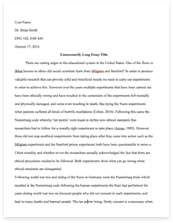“Sugar Cane” by Grace Nichols

- Pages: 4
- Word count: 779
- Category: Poems
A limited time offer! Get a custom sample essay written according to your requirements urgent 3h delivery guaranteed
Order NowOur first poem “Sugar Cane” is written by Grace Nichols. She is of African origin, as we can see through her use of Creole. She is a black female, she utilises a violent and aggressive tone throughout the poem and it is formed in unconventional Verses.
Our other poem on the other hand uses a more polite tone and it is formed with a conventional standard and distinctive rhythm. William Blake is a white male and is of British homage, this can be seen through his use of Standard English.
Although both of these poems differ greatly they both share their common message of racial inequality. They just portray these messages in different ways that are both equally effective in capturing the audience’s attention.
In “Sugar Cane” the anti slavery message is conveyed through the personified sugar cane.
“His waving arms”
“Is a sign for help”
This quote tells us that the slaves aren’t in control of their own lives much the same as the sugar cane plants. The sugar cane is almost pleading for help.
William Black gets his anti racism views by writing about a “Little Black Boy” who is the subject of racism.
“And these black bodies and this sun-burnt face”
“Is but a cloud, and like a shady grove.”
This quote shows us that the “Black Boy” considers his colour a burden.
Blake uses a more formal argument formed on an educated and civilised basis where-as Grace presents the image of the sugar cane growing through her use of Creole. It’s almost as though she is directly using the collective voice of the black people and this becomes very persuasive. She also has a good use of repetition, which helps us understand the monotony of the slaves work. It also creates a kind of drama showing that the sugar cane is only grown to be cut back down again.
“Slowly pain-fully sugar cane pushes his knotted joints upwards from the earth”
As shown above, this piece of the text describes the sugar cane growing and showing that it is struggling to breakthrough the earth. “knotted joints”, “painfully.”
There are some words that are common in both texts. References to “colour” occur in both poems. In “Little Black Boy” it is said that his colour “is but a cloud, and like a shady grove.” This shows, as I have already written, that the boy considers his colour to be a burden to him. In “sugar cane” “his colour is the aura of jaundice when he is ripe.” This shows that the black slaves are unhealthy because of mistreatment. This also shows the venerability of the slaves.
References to heat also appear in the two poems. “My mother taught me underneath a tree and sitting down before the heat of day.” In this case the heat is meant to represent God. In “sugar cane” the quote, “he suffer from belly work burning fever and delirium.” This shows that the immense heat of the day affects the slave and causes him to become delirious.
These poems both offer the same major moral message to their readers, that we should all have racial equality. This is shown greatly in “little black boy” through the idea that we all have the same God. We all share this common belief that we will die, be united in heaven and to all live eternally regardless of our colour or caste. “I’ll shade him from the heat till he can bear, to lean in joy upon our father’s knee.”
This shows that the black boy believes that for his suffering on earth, in heaven he will become more wise that the white boy and will protect him.
In the sugar cane the message is a little stronger. It shows how much of an impact we can have on other peoples lives.
“just before the hurricane strike smashing him to pieces.”
The white man is portrayed as the hurricane. This quote shows of the damage we are doing to people because they are not of our race. Both of these are strong moral messages in their own way, but the strongest one to me would have to be “sugar cane.”
Although “little black boy” has a strong religious message, it isn’t that affective to people who do not follow religion. Grace Nichols poem is much more assertive through its language and the use of Creole seems to mimic the collective voice of the black race. It shows exactly how much damage we can cause to each other without consciously realising it.










